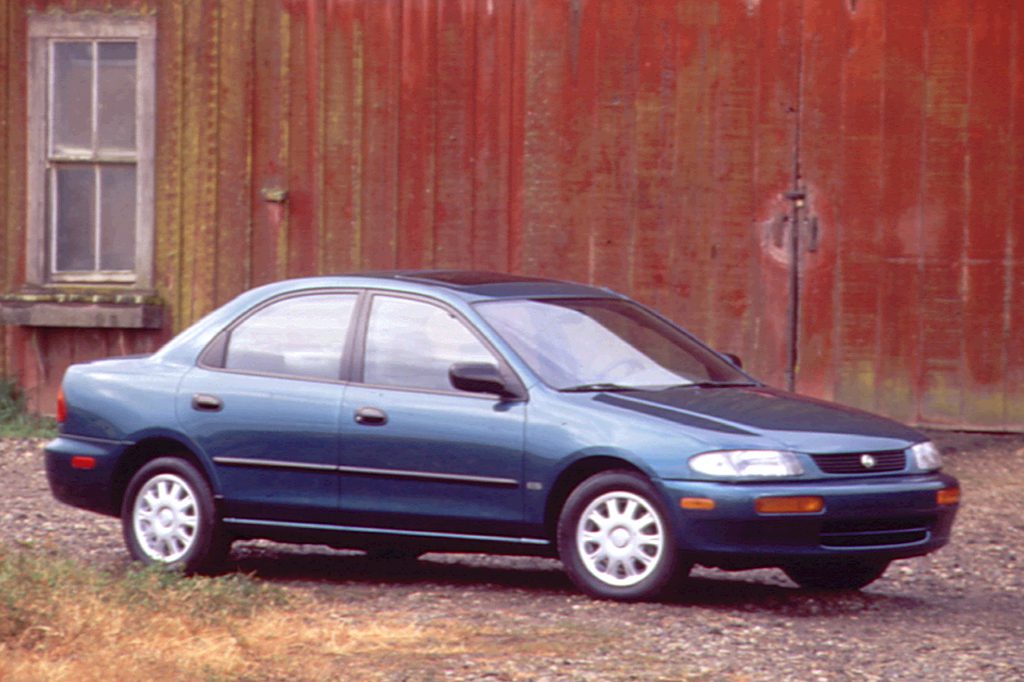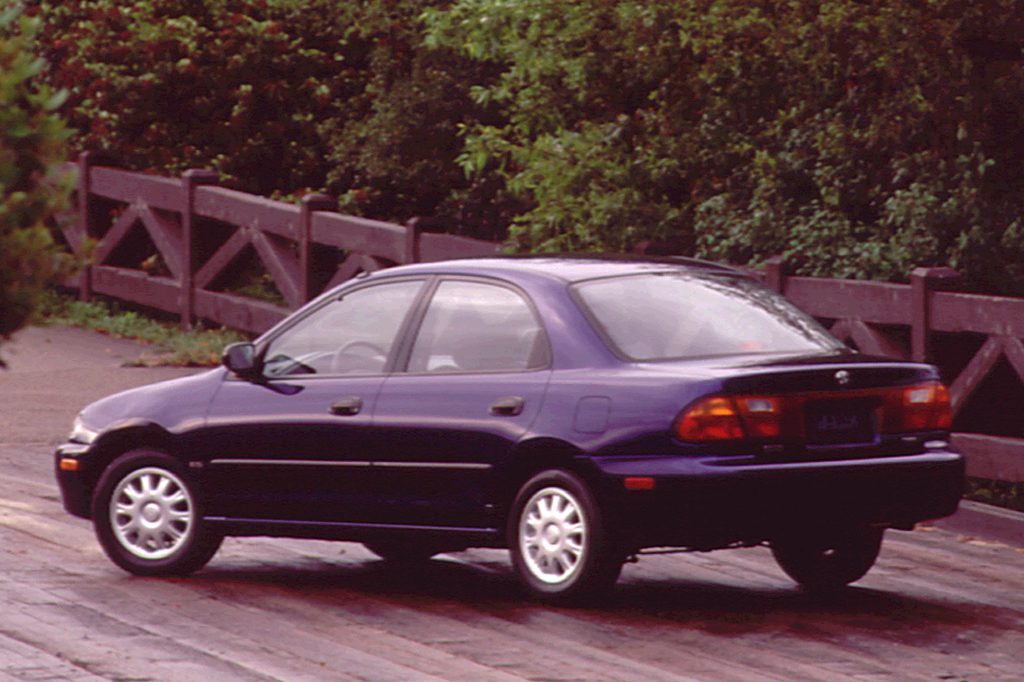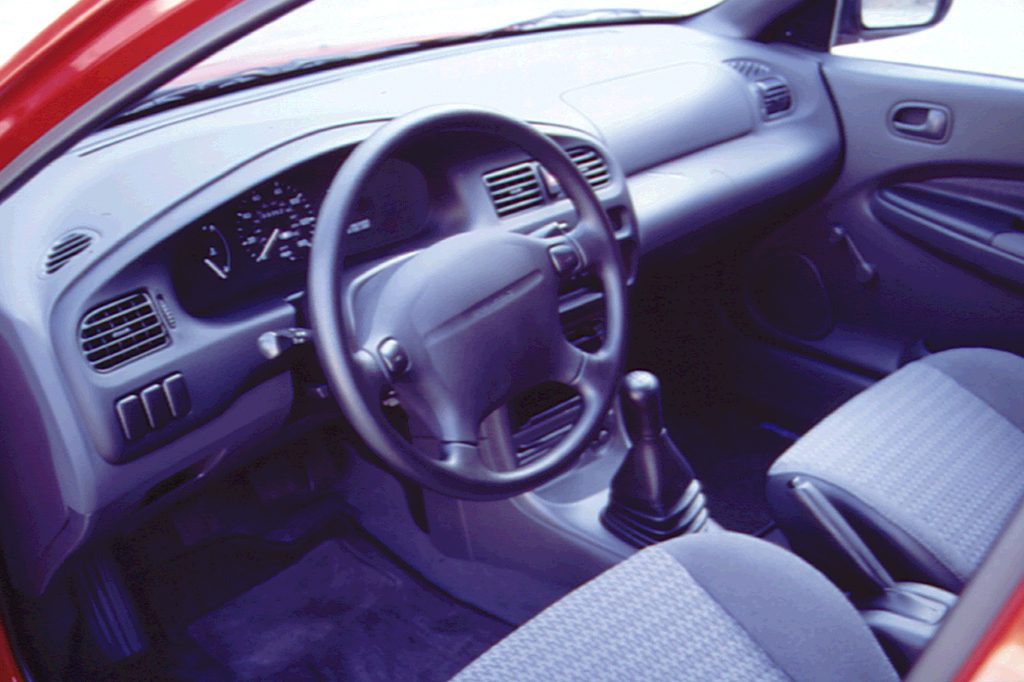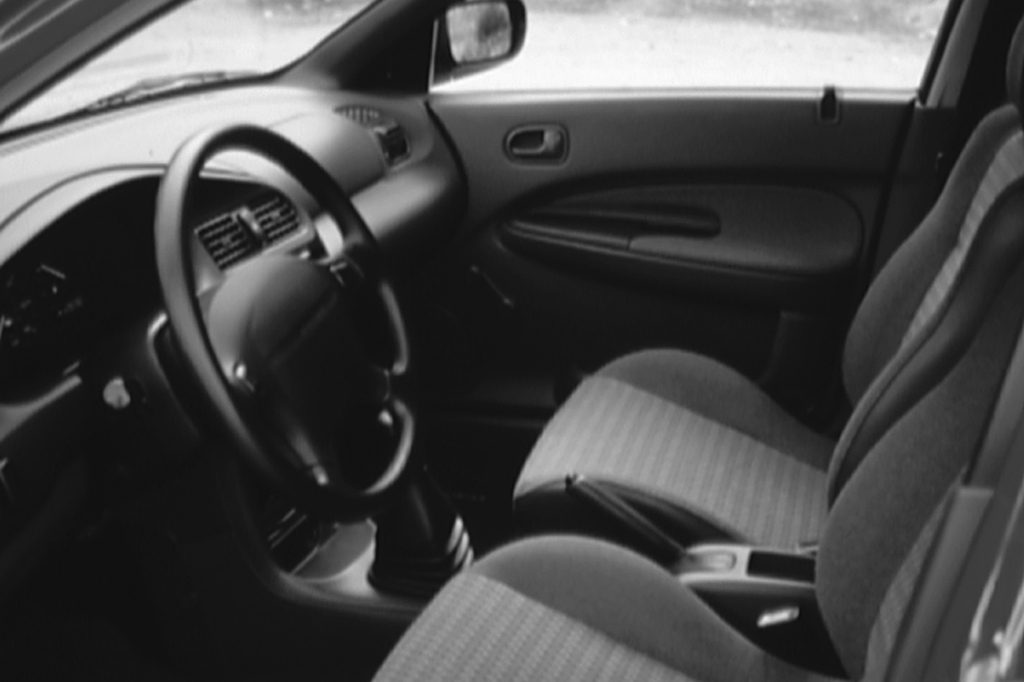| Compact car; Built in Japan |
|
|
| Good condition price range: $1,200 – $2,100* |

1995 Mazda Protege ES

1995 Mazda Protege ES

1995 Mazda Protege ES

1995 Mazda Protege interior

1995 Mazda Protege interior
| Pros: |
|
| Cons: |
|
Exceptionally easy to drive, Protege provides a rewarding mixture of maneuverability, economy, and quietness, coupled with solid assembly quality.
Overview
Redesigned for 1995, Mazda’s front-drive subcompact sedan grew more than four inches in wheelbase and three inches in overall length. Despite the size increase and the addition of dual airbags, the car’s weight stayed about the same. Protege came as a 4-door sedan in three price levels. The base DX and midlevel LX were powered by a 1.5-liter 4-cylinder engine with 92 horsepower. The top-line ES got a 1.8-liter 4-cylinder engine, developing 122 horsepower. Both engines had dual-overhead camshafts and came with a 5-speed manual transmission or optional 4-speed automatic. Antilocking was optional on the LX, but not available on the DX Protege.
Yearly Updates
| 1996 Protege For 1996, antilock braking dropped to an option–no longer standard on the ES edition, and again unavailable on the DX. |
| 1997 Protege This year, Protege LX models got 14-inch tires, like the ES. Stereo units moved to a different location–at the top of the dashboard, therefore easier to operate. Otherwise, minor cosmetic freshening was the only modification. Proteges wore reshaped headlights, front fenders, front bumpers, and a new grille. |
| 1998 Protege Protege saw no change for ’98. An all-new model was waiting in the wings. |
